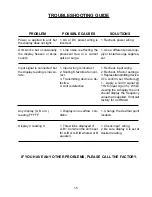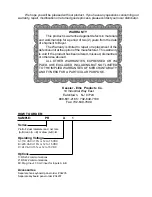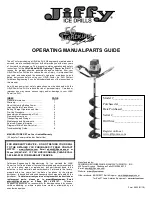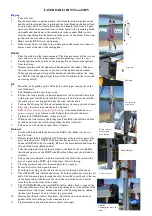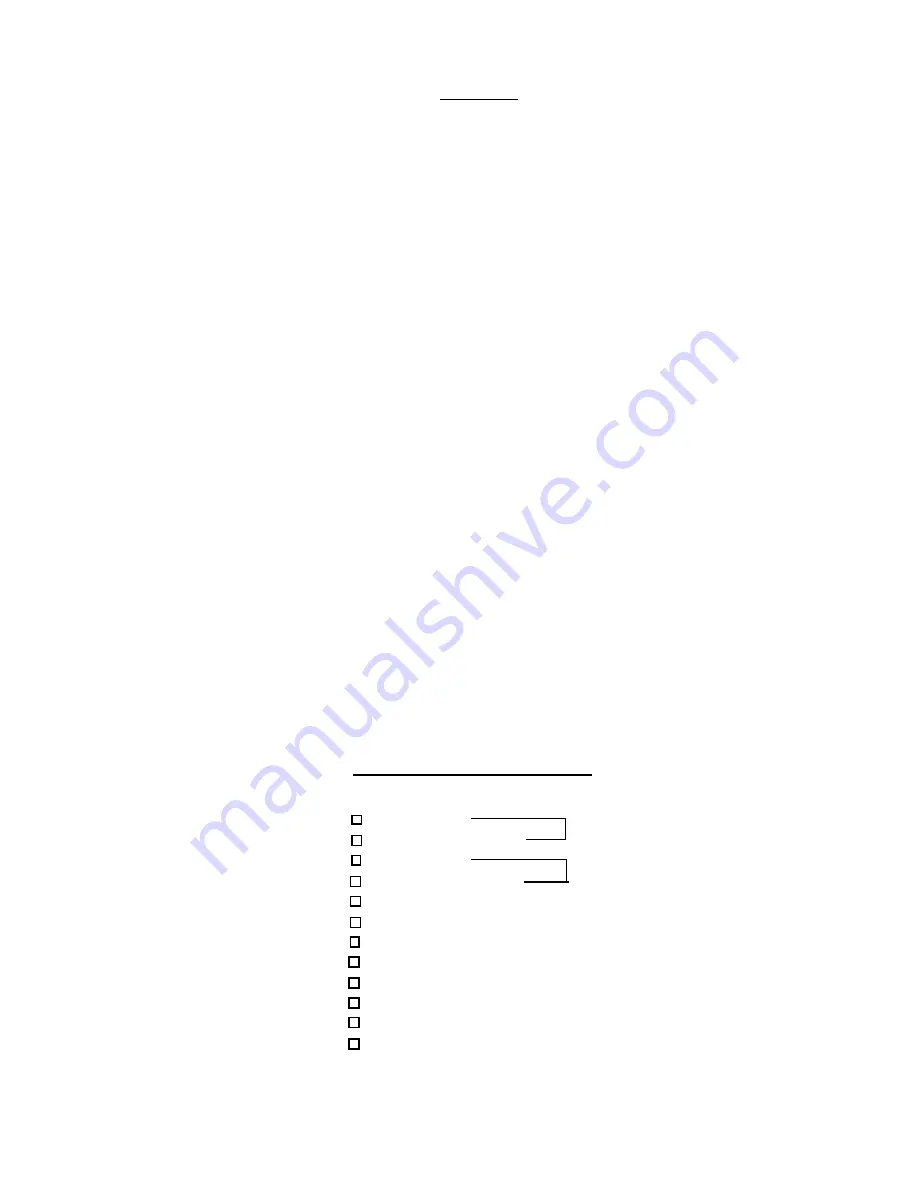
3
WIRING
AC / DC CONNECTIONS:
NOTE: Connect power only after other connections are finished. Do not touch the live AC power terminals.
The unit has been designed with an isolated AC input, therefore polarity is not a concern for the AC power.
The chasis is plastic, therefore earth ground is not used. For DC operation, cDC to terminal 7 and -
DC to terminal 8.
Although the unit is designed to be immune from line or RF interference, the unit is controlled by a micropro-
cessor and an electrically "noisy" environment could cause operating problems. The input power lines should
not be common to power lines for motors, pumps, contactors, etc.
Four sources of noise can occur:
1) AC power line noise- If the unit cannot be connected to an electrically clean power source, an inductive
load supressing device (MOV as GE#V130LA1 or Resistor Capacitor as Paktron# .2uf/220 ohm @ 400V) can
be installed. Although locating the suppressor across the AC supply at the unit should help, best results are
obtained by connecting the suppressor across the leads of the "load" at the device causing the spikes.
2) Input line noise- The noise is carried on the input and DC ground lines. Make sure the input wires are not
run into the unit in a bundle with power input lines. We recommend using shielded cable. Connect the shield
to DC ground of the unit and "earth" at one point in the circuit preferably at the DC ground terminal of the unit.
3) Output lines- The unit has Two relay outputs. When these outputs are used to run external relays or
solenoids, spikes can be generated upon activation. This noise can spread through the instrument causing
operating problems. If the source is a D.C. operated device, a general purpose diode (IN4004) placed across
the solenoid prevents electrical noise spikes. Connect the cathode (banded side) to the more positive side of
the coil. If the source is an A.C. operated device, use a Resistor Capacitor or MOV across the coil.
4) 12 VDC output supply- Noise can be generated on the 12 VDC output supply if it is used to drive inductive
loads or if the current draw exceeds 50 mA. Insure that all inductive loads have a diode (such as IN4004)
across the coil and that the current does not exceed 50 mA.
WIRING CONNECTIONS
1. COMMON
2. N.O. (N.C. / NPN)
3. COMMON
4. N.O. (N.C. / NPN)
5. A INPUT
6. B INPUT
7. 12 V OUTPUT / +DC INPUT
8. -DC (GROUND)
9. RESET INPUT
10.NOT USED
11. AC INPUT
12. AC INPUT
A
B

















